- The Macatumbalen Community-Based Forest and Coastal Management Association, based in the Philippine province of Palawan, has replanted and managed 1,850 hectares of local forests since 2002.
- When Typhoon Rai struck Palawan in December 2021, the community’s forest was devastated, harming not just the ecosystem but also the livelihood of local people, who depend on agroforestry and harvesting of forest products like honey and rattan.
- Four months after the typhoon struck, the community organization has been left largely on its own as it attempts to resume restoration and replanting.
PALAWAN, Philippines — On a dreary April day, agroforestry worker Jimmy Tablason frowns in the sweltering heat as he trudges through the ruins of forests protected for decades by his community.
Typhoon Rai, known as Odette in the Philippines, had struck almost four months ago, and the towering trees it toppled was still blocking trails, impeding access to forest resources that sustain villagers here in the community of Macatumbalen in the western Philippines’ Palawan province.
“In our agroforestry site, we had planted different species like banana, bamboo, breadfruit, lanzones and rambutan,” Tablason says. “Most of them fell down.” The sounds of birds and other wild animals that once greeted him in the forest have also gone, replaced with an eerie silence reminiscent of the heydays of commercial logging in the area.

As the Philippine government transitions to a new administration, no help seems to be coming from Manila, forcing the people of Macatumbalen to rely on themselves to get back on their feet and restore the forests and their livelihoods. Once a logger himself, 53-year-old Tablason leads men in clearing debris from trails using a government-registered chainsaw.
The area’s natural forests were massively degraded by commercial logging that started in the 1980s. Respite came in 1991 when logging was banned across the entire country. In 1997, locals began organizing themselves into the Macatumbalen Community-Based Forest and Coastal Management Association, and in 2002 they were granted a 25-year agreement to conserve, protect and sustainably use 1,850 hectares (4,571 acres) of forest.
This agreement came under the Philippines’ Community-Based Forest Management (CBFM) program, an approach formalized by executive order in 1995 as part of a national strategy for achieving sustainable forestry and social justice.
“When the area was awarded to us [two decades ago] under the CBFM program, forest safeguarding commenced,” association president Nida Collado says as she sits beside the community nursery where seedlings are raised until they are ready to be transplanted in the mountains.
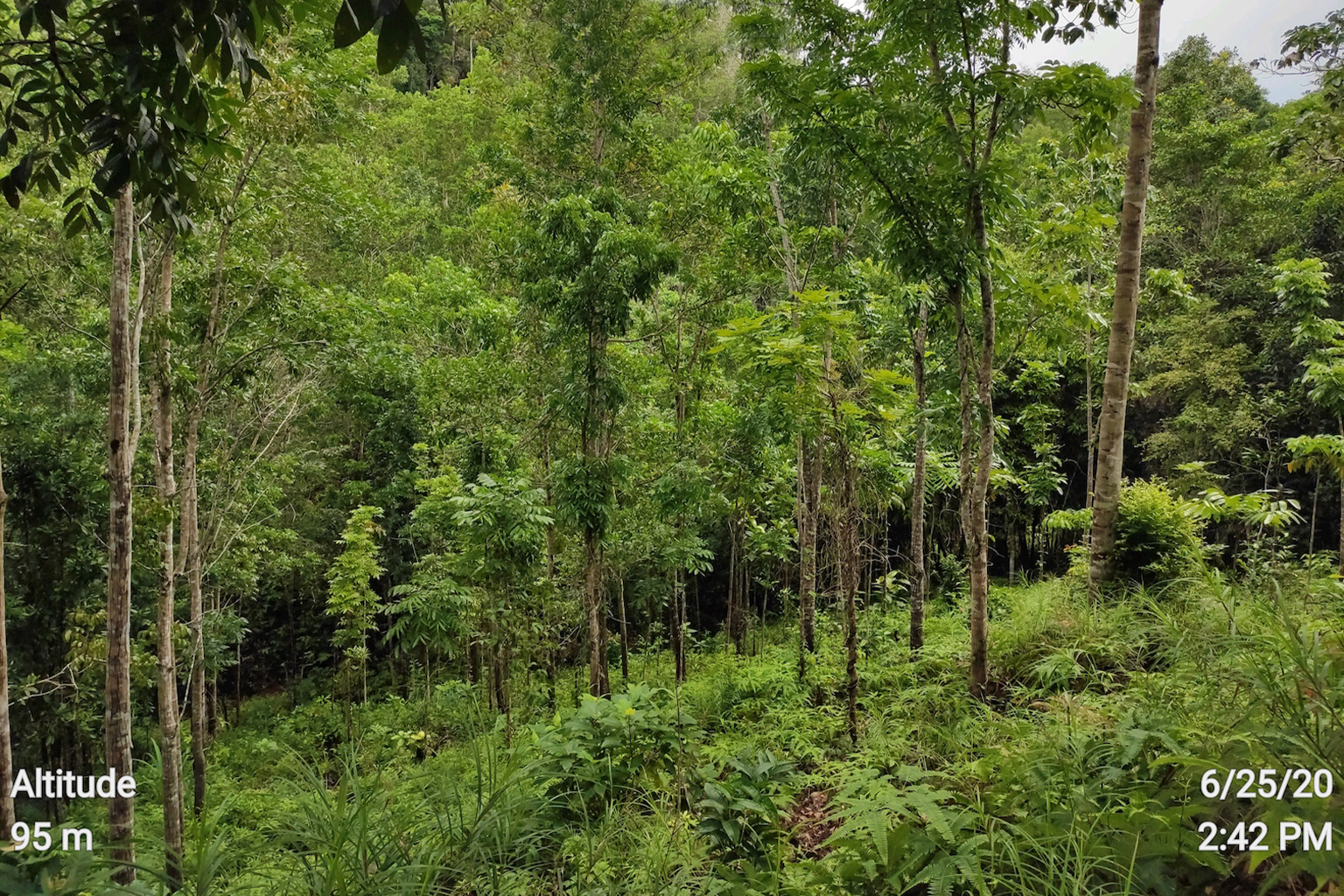
Maintaining the Macatumbalen nursery and reforestation sites has been part of association’s commitments since its inception. These efforts ramped up after 2010, when the association received financial support though publicly funded reforestation programs under the CBFM-Comprehensive Agrarian Reform Program and the National Greening Program. The local office of the Department of Environment and Natural Resources (DENR) office said these NGP-funded projects posted at least 85% survival rates, rehabilitating more than 200 hectares (500 acres) of denuded forestland in Macatumbalen.
Although project funding ended in 2019, the Macatumbalen community, nationally awarded for its exemplary forestry practices, continued enriching the forests with indigenous tree species, especially in the area where its watershed sits.
“We’ve also self-initiated reforestation, aside from the ones we implemented with the local and national government, so that helped in forest regeneration,” Collado says. “The old logging roads closed as a result. The denuded forestland was restored and became intact again.”
But that all changed on Dec. 17, 2021, when Typhoon Rai made its ninth and final landfall in the Philippines, hitting northern Palawan. The storm struck a blow not only to the forests the villagers had worked to revive, but also to the forest-dependent enterprises that had sustained them for decades.
Pre- and post-Odette vegetation index maps show the massive typhoon-induced deforestation in northern Palawan, where the Macatumbalen community-based forest management area is located. Courtesy of CCI Ph Inc. for USAID SIBOL.
Hitting the restart button
For the Macatumbalen villagers, this large swath of forestland, the size of nearly 3,500 football fields, is a wellspring of life. The forests provide clean air and water, and also sustain the community with non-timber forest products (NTFPs) such as honey, rattan, fruits and dammar resin, known locally as almaciga, which they sell at local markets to support their families.
Their access to these forest products is enshrined in the CBFM agreement the community association has with the DENR. “By protecting our forest resources, we’ve been able to reap all these benefits,” Collado says.
“With NTFPs, you’re not cutting down trees for its timber, because you’re just collecting, for instance, resins, leaves and fruits,” says Norli Colili, Palawan coordinator of the nonprofit NTFP-Exchange Programme, whose group provides Macatumbalen and other community organizations with knowledge and capacity-building support, as well as access to funding to scale up their forest-based enterprises.
“That way, the forest ecosystem health is maintained, while the Indigenous peoples and local communities that protect the forests continue to benefit,” Colili says.
But when the typhoon ravaged Macatumbalen’s forests, the once flourishing NTFPs were wiped out as well. According to an assessment by the local DENR, 70% of the sites reforested with support from the National Greening Program were damaged by the typhoon. Gloom fell over the village upon knowing that their fruit trees and other crops due for harvest had not been spared from the destruction.
“Families here struggle to make ends meet,” Tablason says. “Our household income was once good, but now it has declined. We’re starting all over again. As typhoon survivors, we’re going back to number one, as we don’t have livelihood options other than this.”
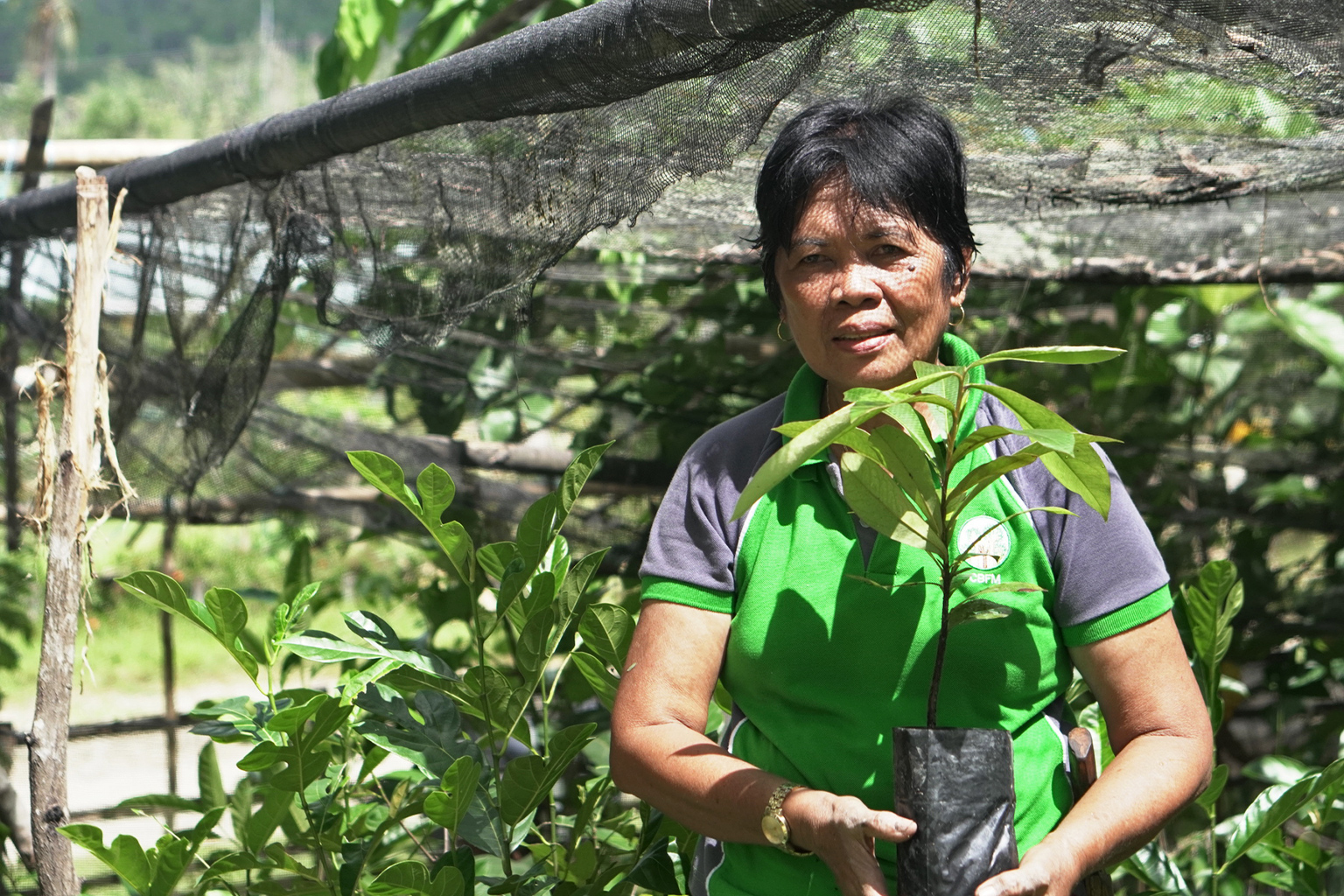

Satellite images generated by USAID’s Sustainable Interventions for Biodiversity, Oceans and Landscapes project confirmed that the hardest-hit areas were the secondary forests in northern Palawan.
“The forests left in Palawan are the natural forests,” says ecosystem integration specialist Neil Aldrin Mallari, from the Center for Conservation Innovations. “The heavily damaged ones were second-growth forests or those planted by people, including the CBFMA areas, which had been reforested after logging.”
This, Mallari says, only suggests that the “forests made by nature not by people are more resilient,” and that the government should consider continuing its support to communities that engage in assisted natural regeneration of denuded forestlands.
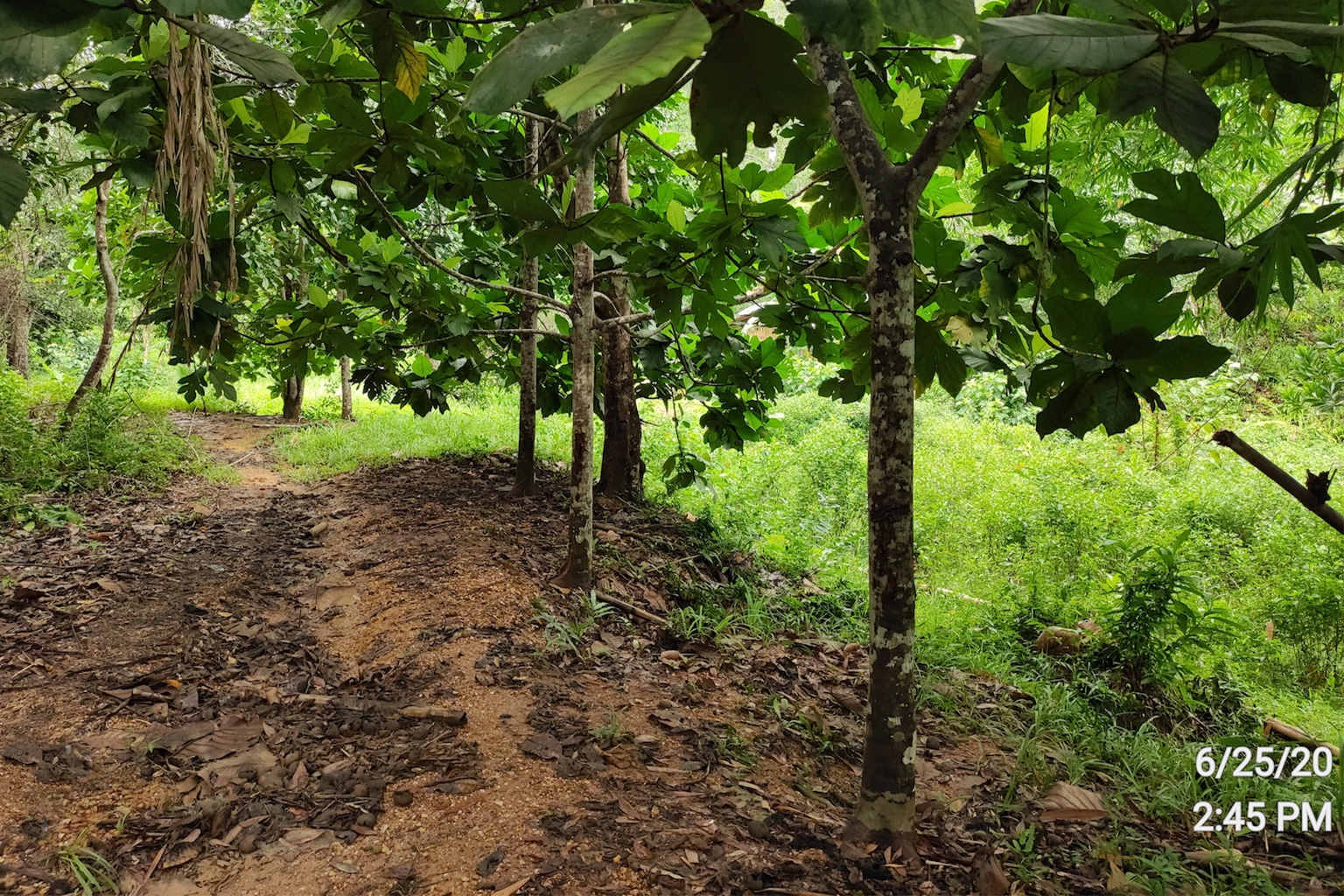
Support slow, but conservation work continues
On March 2, the DENR issued an order allowing its field offices to issue permits for communities to exploit the wood from uprooted trees, in an effort to boost community rehabilitation efforts. “We did an inventory of fallen trees,” says Diogenes Esquillo, a forester with the local DENR office. “The report was already made and their recovery permit application is in process … We further wanted to help them rebound by conducting another inventory for their rattan, so that they can use it as an additional government livelihood assistance.” As of the time this article was published, however, no permits had been issued.
The delay, Esquillo says, is due to lack of staff in the local office, and difficulties in reaching remote community forests. “Our appeal to the national government is to increase our manpower for us to better respond to the order and swiftly deliver the services that the CBFM partner people organizations deserve,” he says.
Any hopes of hiring new staff or receiving funding to help restart reforestation efforts were further delayed by a nationwide ban on public spending during the election period, which ran from March 25 to May 8.
Despite the lack of support from outside, the community is continuing its conservation efforts.
“Even if we’re suffering from a lack of funds, we’re rising to the challenge because, in the end, we know we can survive this,” Tablason says.
Clearing paths has been a priority. Without clear trails, trips to monitor forests and water systems that previously took an hour can take as long as five hours. Obstructed trails also hamper forest patrols, putting forest resources at stake.

“It’s important to guard the forests against people who want to do illegal activities there,” Tablason says. Over the past two decades, his group has seized 28 chainsaws from suspected illegal loggers and helped prosecute violators.
Back in the lowland, where the community nursery sits, the association has started remobilizing its members. Elders, mostly women, pot tree seedlings. Their children help by watering the seedlings to ensure their growth and survival. These seedlings are later transferred to holes dug by men in the mountains.
“Although we were hit by a typhoon, we have great hopes of recovery,” says Collado, who also serves as the provincial and regional president, and national vice president, of the federation of people’s organizations participating in the CBFM program. “We as people’s organizations don’t stop working.”
Signs of forest recovery keep the Macatumbalen villagers going. “We’re not losing hope because when we went up the mountain, we saw how the trees we had planted were standing up amid big tree debris. We geotagged them. We know they’re alive and will recover as long as support from the government continues,” Collado says.
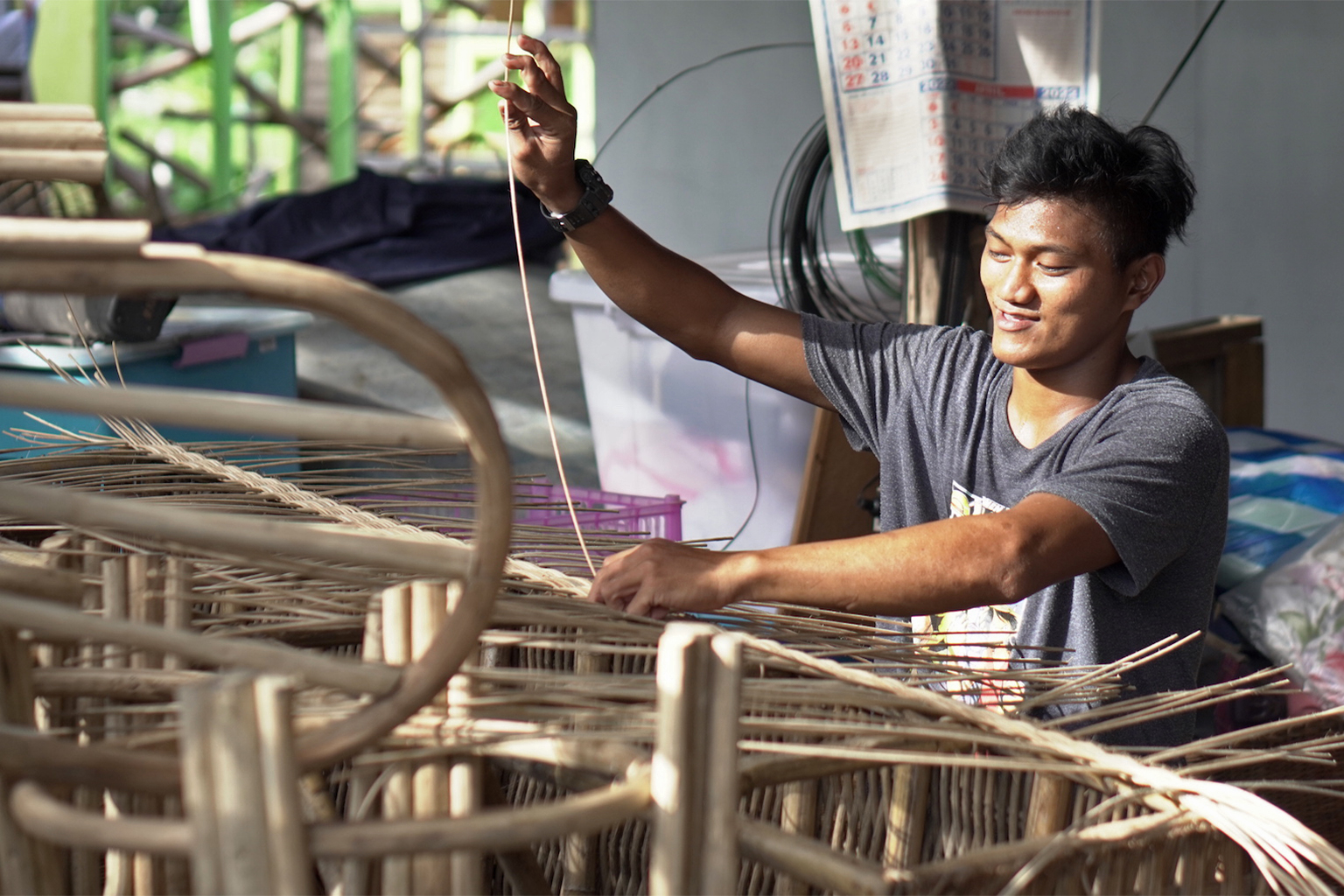
‘Start forest rehab now’
The Philippine government, in its Master Plan for Climate Resilient Forestry Development, recognizes the adverse impacts of climate change on the country’s forest ecosystems and communities. Despite this, the CBFM program, a key element of the country’s strategy for sustainable forestry development, covering around 1.7 million hectares (4.2 million acres), has received only limited funding.
A bill on sustainable forest management that would ensure consistent government support for forest restoration and rehabilitation programs in partnership with nearly 2,000 community associations, has been proposed since the 2000s. At present, the bill is languishing in the Senate, largely due to lobbying by the real estate and mining industries.
“Resources should be channeled toward making nature resilient,” says Mallari, who is also a professor of biology and ecology at De La Salle University. This, he adds, is especially urgent in Palawan, which has the most extensive forest cover in the Philippines.
“When another big one comes … having lost more than 60% of the natural forests in the northern Palawan puts us in a really precarious situation,” Mallari says. “So as much as possible, our fervent prayer to the government is to start rehabilitation now.”
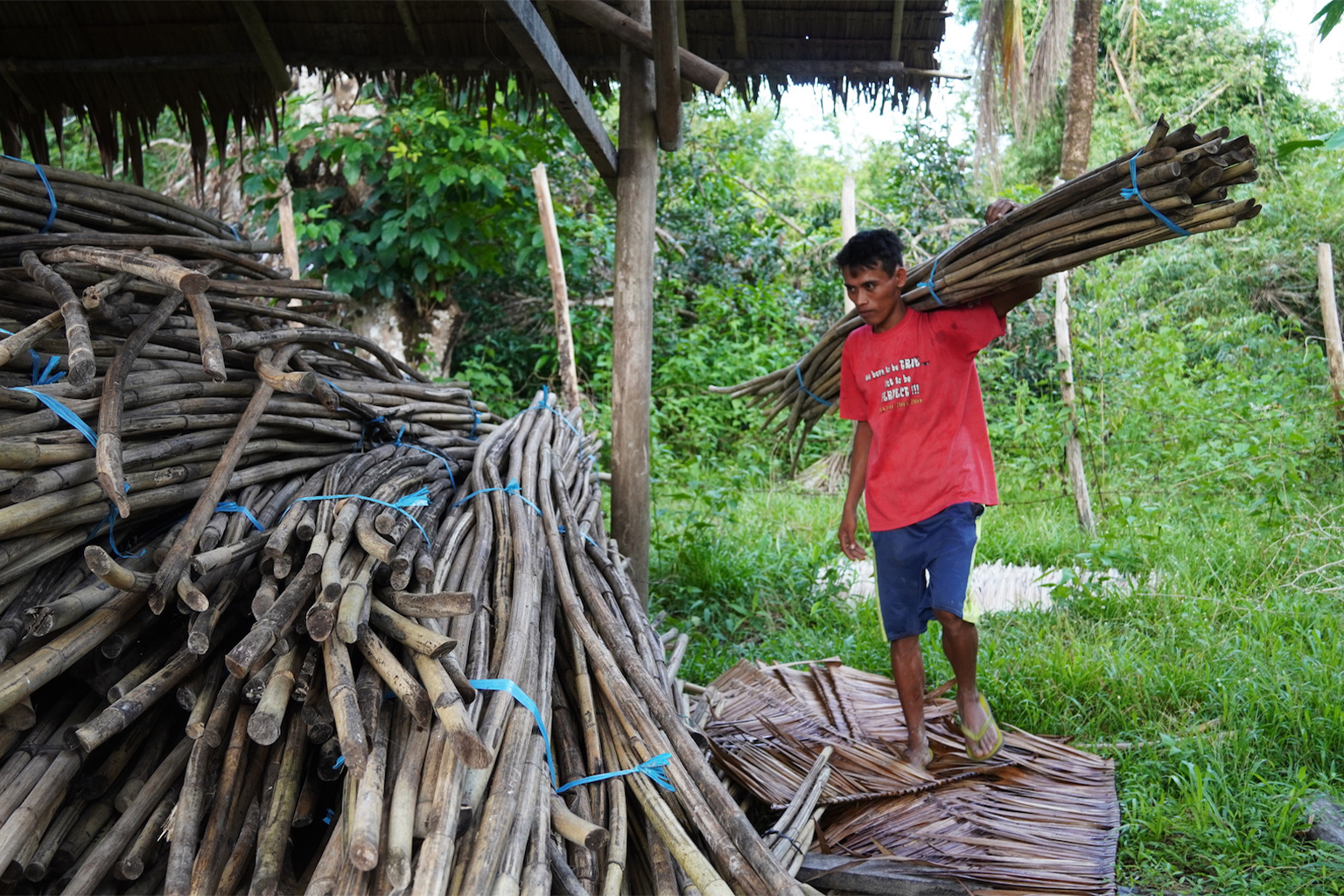
Delaying rehabilitation efforts would only make things worse for forest-dependent rural communities, which are among the country’s poorest, according to scientists and advocates.
“If their forests and fields are not stable, the cycle of pushing them even further to the margins becomes vicious,” Mallari says. “They will be further mired in poverty, because without forests, there’s no water and they will eventually lose their farms.”
A report published earlier this year by the Intergovernmental Panel on Climate Change states with high confidence that agriculture and forestry are among the most climate-exposed sectors. In the context of the Philippines, Mallari says, this means the government should not be looking at frontline communities as mere victims, but as potent partners in the fight against climate change.
“The most powerful, effective and sustainable solution is to let the communities strengthen and fortify their environment for them, for us,” Mallari says. “That’s the solution to secure our future, because we will not be OK if nature is not OK.”

Banner image: Young people at Macatumbalen are trained by their parents to co-manage the community nursery where the tree seedlings are grown and regularly watered. Photo by Keith Anthony S. Fabro for Mongabay.
FEEDBACK: Use this form to send a message to the author of this post. If you want to post a public comment, you can do that at the bottom of the page.
